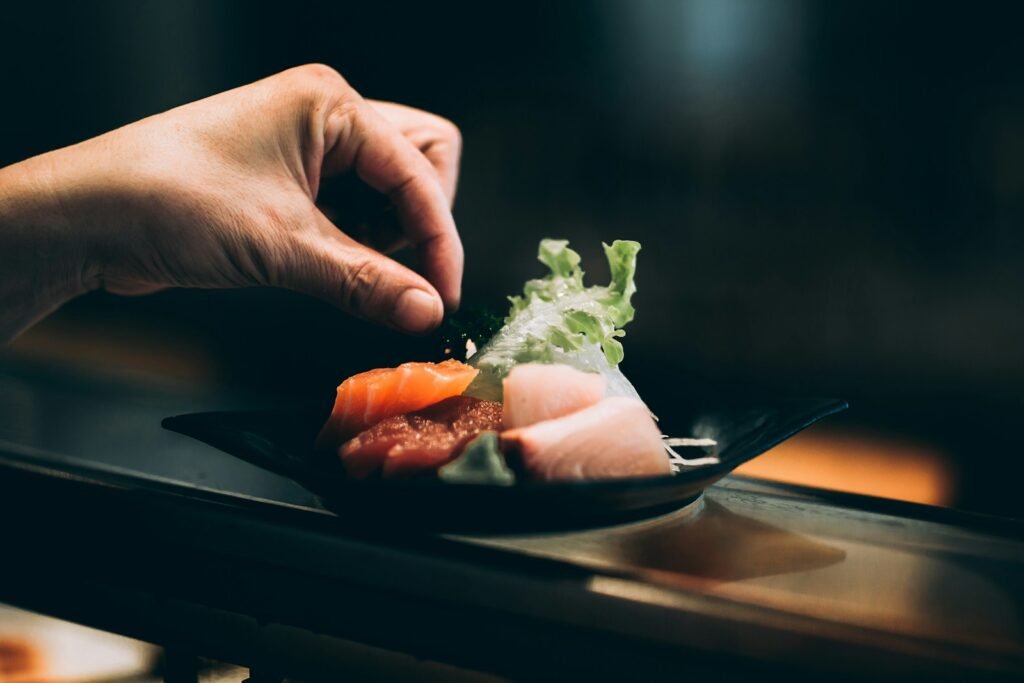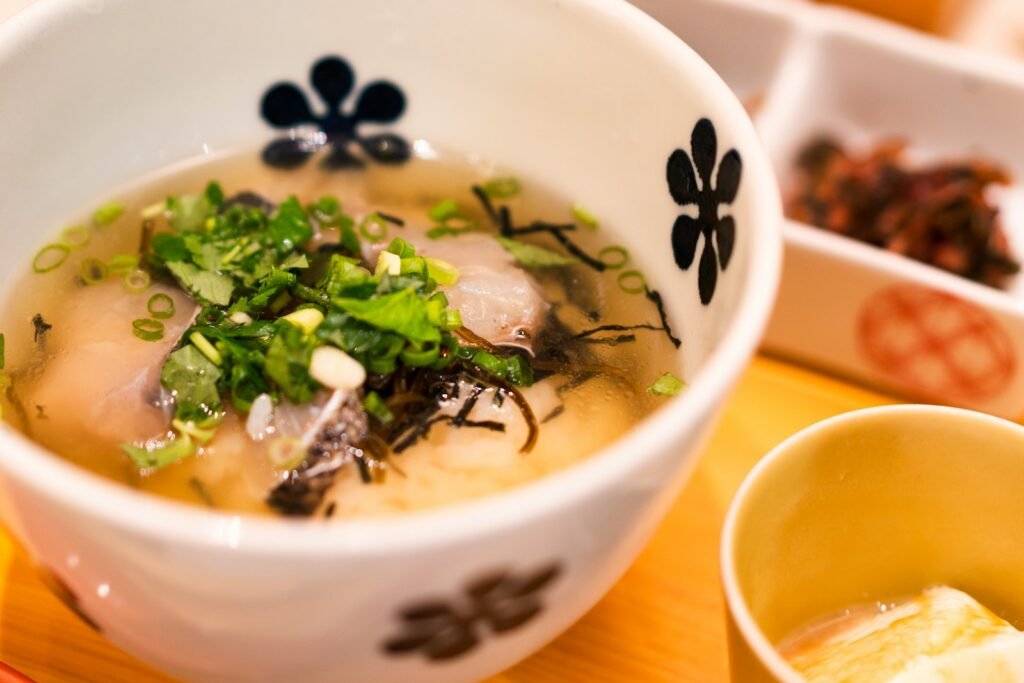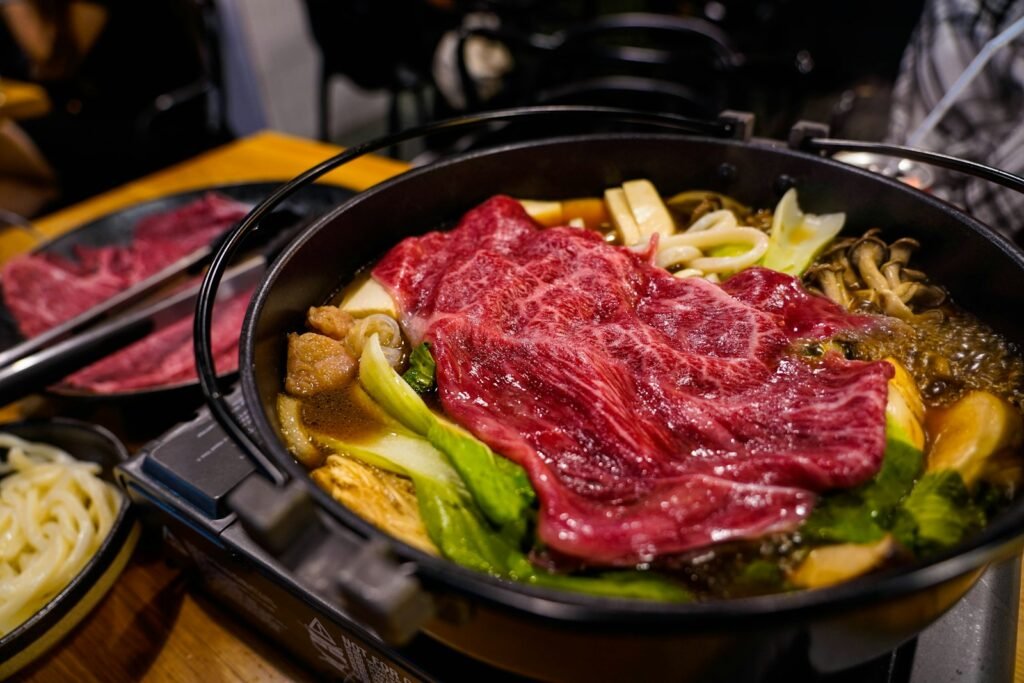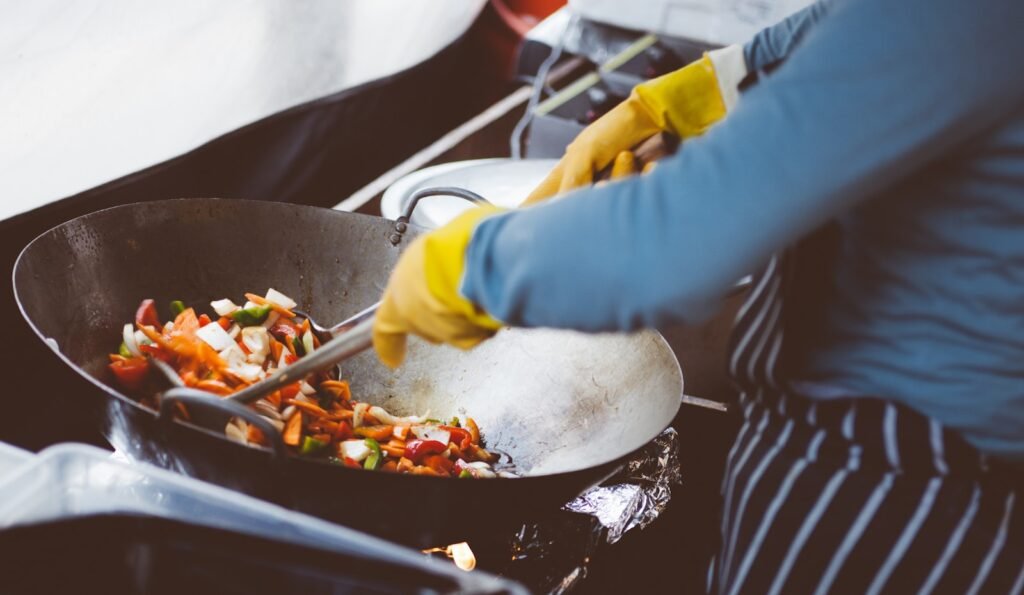
Ingredients for a Flavorful Seafood Sukiyaki
When it comes to crafting a truly delightful Seafood Sukiyaki, the key lies in the ingredients you choose. Picture a symphony of flavors dancing in a bubbling pot of savory broth that’s the magic of Sukiyaki! Quality is paramount here, my dear food enthusiasts. As the great Julia Child once said, “You don’t have to cook fancy or complicated masterpieces just good food from fresh ingredients.”
Let’s start with the star of the show the seafood. From luscious slices of salmon to plump prawns and tender scallops, the ocean’s bounty is your playground. As the Japanese saying goes, “He who eats seafood, lives a healthy life.” So, choose wisely and let the seafood shine in your Sukiyaki. And of course, don’t forget the vibrant array of vegetables crisp bok choy, earthy shiitake mushrooms, and sweet yellow bell peppers. It’s a celebration of colors and textures in every bite! So, let your culinary creativity run wild and savor the art of crafting a flavor-packed Seafood Sukiyaki like a true master of the kitchen.
The Origins of Sukiyaki and its Evolution
There’s something truly magical about the origins of sukiyaki, a dish that has captured the hearts and stomachs of many around the globe. Legend has it that sukiyaki was created when a group of hungry Japanese peasants decided to cook a meal using their precious beef by simmering it with soy sauce, sugar, and mirin. As the tender meat soaked up the sweet and savory flavors, a delicious new dish was born that satisfied both hunger and soul.
Over the years, sukiyaki has evolved into a beloved staple in Japanese cuisine, with variations and interpretations that reflect the creativity and ingenuity of chefs and home cooks alike. As the great Julia Child once said, “In cooking, you’ve got to have a what-the-hell attitude.” That spirit of fearless experimentation is alive and well in the world of sukiyaki, where chefs are not afraid to push the boundaries of tradition and merge flavors from different culinary horizons. The evolution of sukiyaki is a testament to the endless possibilities that arise when tradition meets innovation in the kitchen.
How to Prepare the Perfect Broth for Seafood Sukiyaki
The key to crafting the perfect broth for your seafood sukiyaki lies in the art of balancing flavors and embracing the essence of simplicity. In the words of the great Japanese chef, Shinichiro Takagi, “A good broth will elevate even the simplest of ingredients to extraordinary heights.” To start, combine traditional dashi stock with mirin, soy sauce, and a hint of sugar to create a harmonious base that will infuse your sukiyaki with depth and richness. Remember, the beauty of sukiyaki lies in its ability to let the natural flavors of the ingredients shine through, so don’t overpower the broth with unnecessary complexity.
When simmering your seafood in the fragrant broth, allow each ingredient to dance and mingle together in perfect harmony. As the renowned food critic, Masuhiro Yamamoto, once said, “Sukiyaki is a celebration of flavors where every bite tells a story.” Let the gentle heat coax out the umami essence of the seafood, creating a symphony of taste that will transport your taste buds to the bustling streets of Japan. And don’t forget, a generous sprinkle of thinly sliced green onions adds a fresh, crisp note to your sukiyaki, completing the sensory experience with a touch of vibrancy.
Choosing the Freshest Seafood for Your Sukiyaki
Ah, the quest for the freshest seafood for your sukiyaki! As a self-proclaimed seafood aficionado, I assure you, my dear foodies, that this journey is as thrilling as it is rewarding. Picture me, Nobu Matsuhisa, with a discerning eye for quality ingredients, scouring the markets of Japan in search of the perfect catch for my next culinary masterpiece.
When it comes to sukiyaki, freshness is key. As renowned chef Jiro Ono once said, “Without good ingredients, you cannot make good food.” So, how do we ensure that our seafood shines in the bubbling broth of our sukiyaki pot? It all starts with selecting seafood that is not just fresh, but also sustainable. Remember, we have a duty to respect the oceans and the creatures that dwell within them. Look for signs of bright eyes, firm flesh, and a clean, briny scent these are the telltale markers of seafood that is at the peak of its flavor.
In my culinary adventures, I’ve learned that the journey to finding the freshest seafood is not just about the end result on the plate, but also about the relationships we form along the way. Interacting with local fishmongers, listening to their stories of the sea, and understanding the intricacies of each catch these are the moments that add depth and soul to our dining experiences. So, my fellow food enthusiasts, let us embark on this flavorful voyage together, honoring the bounty of the sea with every delectable bite we take.
The Importance of Quality Ingredients in Sukiyaki
When it comes to creating a delicious seafood sukiyaki, the quality of your ingredients can make all the difference. As the renowned chef Julia Child once said, “You don’t have to cook fancy or complicated masterpieces – just good food from fresh ingredients.” This holds especially true for sukiyaki, where the simplicity of the dish allows the flavors of the ingredients to truly shine through.
Freshness is key when it comes to selecting your seafood for sukiyaki. As the Japanese proverb goes, “Nana korobi, ya oki” – fall seven times, get up eight. In the same vein, choosing the freshest seafood for your sukiyaki might require a few tries, but the end result is well worth the effort. Look for fish that smells like the ocean breeze, shrimp that are firm to the touch, and scallops that glisten like pearls. Quality ingredients not only elevate the taste of your sukiyaki but also ensure a memorable dining experience that pays homage to the rich culinary traditions of Japan.
The joy of Japanese cuisine lies in its ability to bring people together around a shared meal, celebrating the beauty of simplicity and the power of quality ingredients. As you embark on your seafood sukiyaki journey, remember the words of the legendary chef Nobu Matsuhisa, “Making good food is a talent. Buying is an art.” By selecting the finest ingredients and infusing your sukiyaki with love and care, you not only create a delicious meal but also a lasting memory that honors the essence of Japanese cooking. So gather your friends and family, savor each bite, and revel in the magic of sukiyaki – a dish that embodies the heart and soul of Japanese culinary tradition.
Tips for Cooking Seafood Sukiyaki Like a Pro
Cooking seafood sukiyaki like a pro is all about embracing the simplicity and elegance of this traditional Japanese dish. As the great Julia Child once said, “You don’t have to cook fancy or complicated masterpieces, just good food from fresh ingredients.” And in the case of sukiyaki, this rings true – quality ingredients are key.
When it comes to preparing seafood sukiyaki, remember that less is more. Don’t overwhelm the dish with too many ingredients or seasonings. As I learned from my mentor, Chef Jiro Ono, “The best tuna comes from the loin, the fatty part; that’s where the flavor is.” Similarly, choose fresh seafood that speaks for itself, enhancing it with a delicate broth and just the right amount of soy sauce and mirin.
In the world of Japanese cuisine, attention to detail is paramount. As the saying goes, “A great meal is not about the food, but about the experience.” So take your time, savor each moment of preparing and enjoying your seafood sukiyaki. Remember, it’s not just a meal; it’s a journey into the heart of Japanese flavors and traditions.
Exploring Different Types of Seafood for Sukiyaki
When it comes to sukiyaki, the choice of seafood can truly elevate the dish to new heights. From succulent shrimp to tender squid, the possibilities are as vast as the ocean itself. As a self-proclaimed seafood aficionado, I’ve always believed that the key to a memorable sukiyaki lies in the freshness and quality of the ingredients.
One of my favorite seafood options for sukiyaki is plump scallops. As the renowned chef Masa Takayama once said, “Scallops are like the foie gras of the sea.” Their delicate sweetness pairs beautifully with the rich flavors of the sukiyaki broth, creating a symphony of taste in every bite. Another underrated gem is snow crab, known for its sweet, briny meat that adds a luxurious touch to the dish. As the saying goes, “Life is short, eat the crab.” And what better way to indulge than in a steaming pot of seafood sukiyaki?
Enhancing the Flavors of Sukiyaki with Seasonings and Sauces
Ah, the art of enhancing the flavors of Sukiyaki with seasonings and sauces! It’s like adding a touch of magic to an already delightful dish. As a self-proclaimed food connoisseur, I believe that the right combination of seasonings and sauces can take your Sukiyaki from good to absolutely unforgettable.
When it comes to seasoning your Sukiyaki, simplicity is key. As the legendary Japanese chef, Masaharu Morimoto once said, “Good soup is one of the prime ingredients for good living.” So, start with a quality base of soy sauce, mirin, and a hint of sugar to balance out the flavors. Then, get creative with a dash of sake for complexity and depth. Remember, the key is to let the natural flavors of the seafood shine through while adding a subtle umami boost with your seasonings.
Now, let’s talk sauces! One of my favorite additions to Sukiyaki is a dollop of freshly grated ginger mixed with soy sauce. This zesty combination adds a zing that elevates the dish to a whole new level. As the famous chef, Nobu Matsuhisa once said, “Without the right sauces, the most wonderful meat would end up tasting like a lump of wet sand.” So, don’t underestimate the power of a well-crafted sauce to transform your Sukiyaki experience. Just a drizzle here and a dip there, and you’re on your way to flavor paradise!


